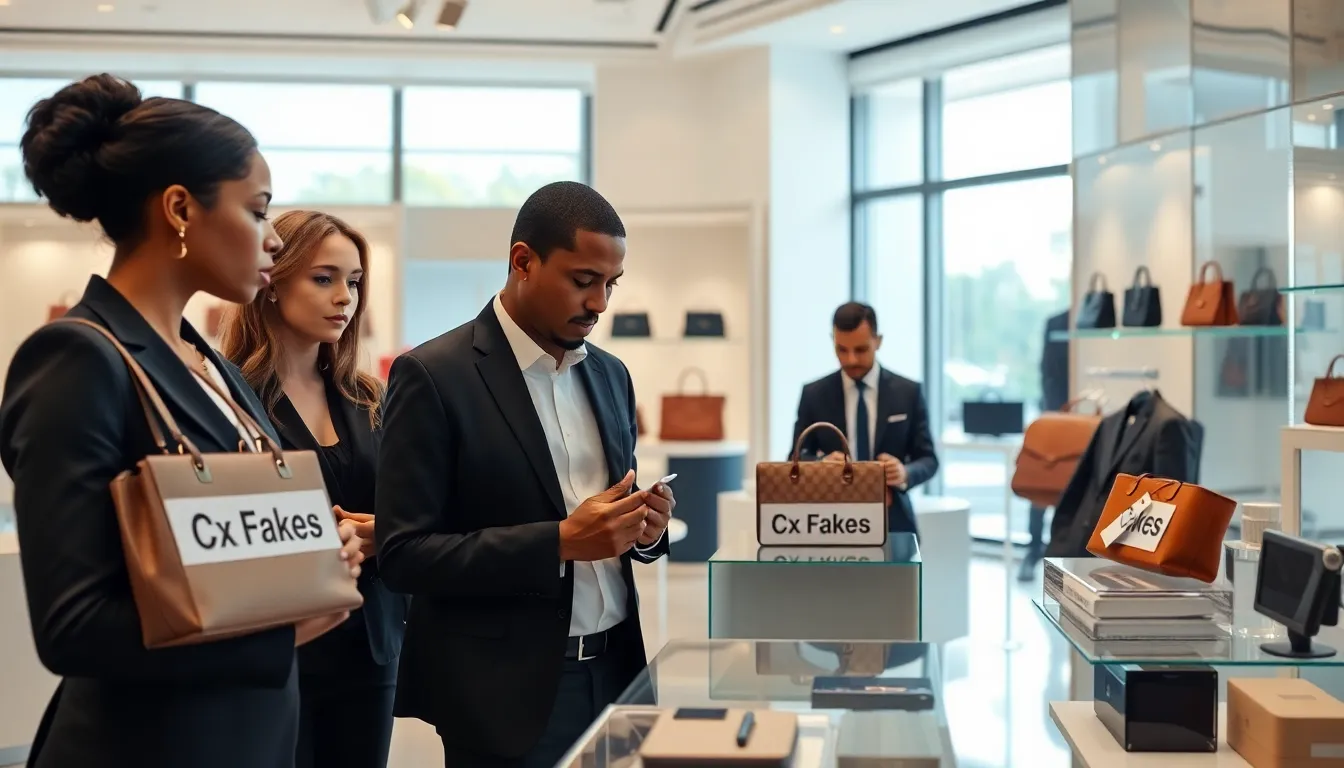Ever stumbled upon something that looks like the real deal but is nothing more than a cleverly crafted imitation? Welcome to the world of cx fakes. With counterfeit products popping up faster than a cat meme goes viral, it’s important to understand what cx fakes truly are and why they matter. Buckle up, because we’re diving deep into this intriguing phenomenon that affects industries across the globe, and trust me, you won’t want to miss it.
cx fakes

Cx fakes are counterfeit or imitation products designed to trick consumers into believing they are purchasing genuine items. These can range from luxury goods to everyday electronics. What starts as a brilliant marketing strategy quickly morphs into a web of deceit, targeting unsuspecting buyers. This trend has gained traction due to the rise of online shopping and the increasing sophistication of counterfeiters. In essence, if something looks like it should cost a fortune but has a price tag that seems almost too good to be true, chances are it’s a cx fake.
Also, cx fakes are not always easy to spot. They often mimic brand logos, packaging, and even the product’s feel. The allure of getting a high-end item at a fraction of the cost has lured many consumers into making impulsive purchases, unknowingly supporting counterfeit markets.
The Impact of Cx Fakes on Industries
The rise of cx fakes has left industries grappling with significant repercussions. Primarily, these fakes undermine brand integrity, diluting the value that established brands have painstakingly built over years. For instance, the fashion industry suffers tremendously as counterfeit luxury items flood the market, making it challenging for genuine brands to stand out.
Also, the financial ramifications cannot be overlooked. The global economic losses attributable to counterfeiting are estimated to be in the hundreds of billions annually. This loss is not just confined to companies, it trickles down to employees and even consumers who end up with poor-quality imitations. These businesses may face closures, downsizing, or, in severe cases, bankruptcy. Besides, the safety risks associated with fake products, especially in sectors like electronics and pharmaceuticals, can lead to severe consequences for consumers.
Recognizing Cx Fakes: Key Characteristics
Spotting cx fakes can feel like finding a needle in a haystack, but several key characteristics can help consumers identify these imposters.
- Packaging Quality: Genuine products typically come in high-quality packaging, while cx fakes often cut corners. If the box feels flimsy or the print looks off, be wary.
- Price Tags: If the price tag screams bargain but the item looks like a million bucks, stop right there. Discounted prices are a telltale sign of counterfeit goods.
- Branding Errors: Keep an eye out for misspellings or variations in logos. Every brand has specific fonts and designs they adhere to, making deviations a red flag.
- Material and Craftsmanship: Authentic products usually display high craftsmanship. If seams are uneven or materials feel cheap, there’s a good chance it’s a fake.
- Seller Reputation: Purchase items from reputable sellers. If a deal feels too good to be true on a lesser-known site, it probably is.
The Legal and Ethical Ramifications of Cx Fakes
The existence of cx fakes brings forth a myriad of legal and ethical challenges. Counterfeiting is illegal in most jurisdictions, with laws designed to protect intellectual property rights. But, enforcement can be challenging, especially when counterfeiters operate online or internationally. This makes it difficult for brands to take legal action against their perpetrators, resulting in a cycle of rampant fakes impacting legitimate businesses.
Also, the ethical implications weigh heavily on both consumers and producers. Personalized responsibility comes into play, by purchasing cx fakes, consumers often unintentionally support unethical labor practices associated with their production. These items are rarely produced under fair labor standards, contributing to exploitation in various parts of the world.
Combating Cx Fakes: Strategies and Best Practices
Tackling the cx fake phenomenon demands a collaborative effort from businesses, consumers, and regulatory organizations.
- Education: Companies should invest in educating consumers about the risks associated with cx fakes. Knowledge is power, and informed consumers are less likely to fall prey to counterfeiters.
- Enhanced Security Features: Incorporating advanced security measures, such as holograms or QR codes, can help authenticate products. Brands that prioritize innovation can make it more challenging for counterfeiters to replicate their goods.
- Reporting Systems: Establish clear reporting protocols for counterfeit items, aiding consumers and businesses in alerting authorities about suspicious products. By facilitating swift action, these systems can help curb the spread of cx fakes.
- Collaboration with Law Enforcement: Strong partnerships with law enforcement agencies can bolster the fight against counterfeiting. Regular audits and inspections, especially in high-risk areas, can deter fake goods from breaching the market.
The Future of Cx Fakes and Market Responses
As the fight against cx fakes evolves, so too does the landscape of online shopping and consumer habits. The future would likely encompass better technology to combat counterfeits, along with stricter regulations and policies. Brands are expected to invest more heavily in research and development to protect their assets against counterfeiters. Besides, advancements in blockchain technology may offer a revolutionary solution for tracking the authenticity of products throughout their journey, from manufacturing to sale.
On the consumer end, there’s an increasing trend toward valuing ethical consumption. Buyers are becoming more selective, choosing to support brands that adhere to ethical practices. As consumers demand transparency, companies that demonstrate integrity and authenticity will undoubtedly thrive while those that falter in these areas may indeed find it hard to compete.

